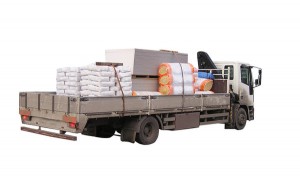
The most common workplace vehicle accidents happen when reversing, loading, unloading and during pedestrian movements.
Because of this both traffic and the movement of pedestrians needs to designed, planned and controlled to ensure that there is a reduced risk to both pedestrians and vehicles.
When workplace safety is improved it reduces the incidence of injuries but is also known to improve the productivity and efficiency of the workplace.
Often workplace vehicle hazards tend to happen when:
- When the movement of pedestrians at a workplace contacts the movements of mobile plant
- When either mobile plant or vehicles are reversing
- When vehicles first arrive or when they are leaving
- During unloading and loading
- When trailers are being hitched or unhitched
- When drivers are getting into or out of vehicles
- During the securing of loads
- When maintenance work is being done
The workers who are most at risk are those that interact or work with the mobile plant and vehicles like:
- Forklifts
- Vans
- Cars
- Trucks
- Semi trailers and trailers
- Tractors
- Loaders
- Utilities
- Buses
Other than workers people that may be at risk include customers, visitors, managers and self-employed people.
Conducting Risk assessment
The law requires that all employers must conduct regular risk assessments, identify hazards, assess the risks of injury, review the workplace procedures and devise risk control measures.
All risks need to be controlled following the hierarchy that is included in the Workplace Health and Safety Act:
- By eliminating the vehicle or pedestrian movement if possible, or taking away the need for vehicle reversing
- Using safer vehicles, loading facilities, signage and road surface in place of unsafe ones
- Working to isolate either pedestrian or vehicle movement
- Minimising can be implemented with the use of engineering controls like handrails and pedestrian barriers
- Administrative controls can be implemented through training, supervision and safe work procedures and by
- Detailed and documented inductions
- Making sure that speed limits are followed
- Stopping reversing in designated areas or at designated times
- Designating separate parking for work and private vehicles
- Continuous risk monitoring to ensure that controls are working
Through the use of PPE (personal protective equipment) – this is the lowest level of control in the hierarchy



